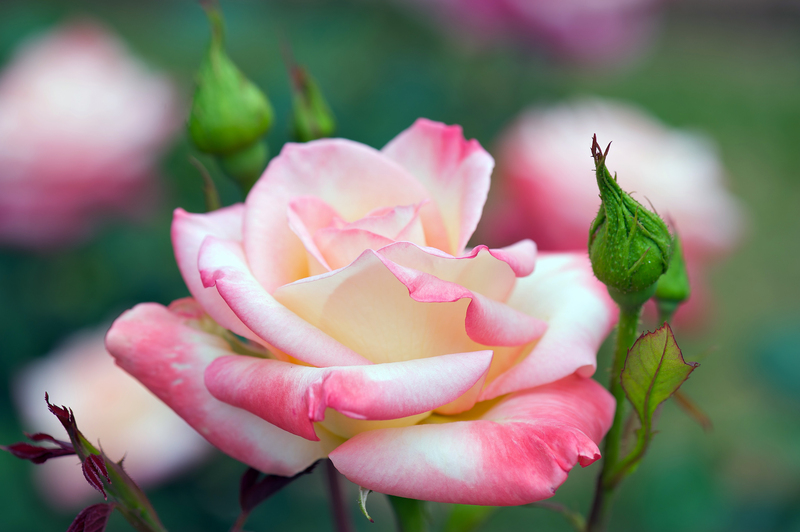Discover the Secrets to Creating a Vibrant Herb Garden
Posted on 25/09/2025
Discover the Secrets to Creating a Vibrant Herb Garden
Imagine stepping into your backyard and being greeted by the aromatic scents of basil, thyme, and lavender. A lush, thriving herb garden isn't just a dream--it's a delightful reality that's within your reach. Whether you're a seasoned gardener or just getting started, learning the secrets to cultivating a vibrant herb garden can provide you with fresh flavors, natural remedies, and a stunning display of green beauty.
Why Start an Herb Garden?
An herb garden is more than just a collection of plants--it's a way to elevate everyday meals, promote wellness, and connect with nature. Here's why you should consider nurturing your own herb haven:
- Elevate Culinary Dishes: Fresh-cut herbs add unparalleled flavor to your cooking.
- Health Benefits: Homegrown herbs like mint and oregano have medicinal properties.
- Pollinator Paradise: Many herbs attract bees and butterflies, helping pollinate your garden.
- Cost-Effective: Grow your own instead of buying pricey supermarket bundles.
- Year-Round Enjoyment: Certain herbs can be grown indoors during colder months.

Secrets to Creating a Thriving Herb Garden
1. Choosing the Right Location
Sunlight is the lifeblood of a vibrant herb garden. Most herbs love the warmth and require at least 6-8 hours of direct sun daily. Carefully select a spot where your plants can bask in sunlight. If outdoor space is limited, opt for a sunny windowsill or use grow lights indoors.
2. Selecting the Best Herbs for Your Climate
All herbs aren't created equal--some thrive in hot, dry climates, while others prefer cooler and moister conditions. Here are some essential herbs and their preferred environments:
- Basil: Thrives in warm temperatures with plenty of sun.
- Mint: Prefers partial shade and moist soil, but very adaptable.
- Rosemary: Loves dry, sunny spots and well-drained soil.
- Thyme: Enjoys sandy, dry soil with lots of sunlight.
- Parsley: Does well in partial shade.
- Cilantro: Grows quickly in cooler climates.
Research which varieties are best suited to your region for a truly vibrant herb garden.
3. Optimal Soil Preparation
The foundation of any healthy herb garden lies in the quality of its soil. Herbs thrive in well-drained, fertile soil with plenty of organic matter. Here's how to create the perfect environment for your herbs:
- Loosen the soil: Use a garden fork to break up soil and remove rocks.
- Amend with compost: Mix in compost or aged manure to enhance fertility.
- Check pH levels: Most herbs prefer slightly acidic to neutral soil (pH 6.0 - 7.0).
- Ensure drainage: Herbs dislike soggy roots; raise beds or use pots if your soil retains water.
4. Planting Techniques for a Healthy Herb Garden
Knowing when and how to plant your herbs can make all the difference. Follow these expert tips:
- Start from Seed or Transplants: Some herbs like dill and basil are easy from seed; others like rosemary do best from established plants.
- Mind the Spacing: Herbs need space to breathe--check the recommended distance on seed packets.
- Water Wisely: Water early in the morning and at the base of the plant, avoiding soggy foliage.
- Mulch for Moisture: A layer of organic mulch helps retain water and suppress weeds.
Timing is key--most herbs should be planted after the last frost. Consult local planting charts for the best results.
5. Expert Herb Garden Layout Ideas
Arranging your plants thoughtfully is a secret to achieving a visually stunning and high-yield herb garden:
- Raised Beds: Ideal for controlling soil quality and drainage.
- Vertical Gardens: Utilize wall space for vining herbs like mint and oregano.
- Container Gardens: Perfect for balconies, patios, or small spaces.
- Spiral Herb Gardens: Create a spiral mound to offer various microclimates for different herbs.
Cluster herbs with similar water and light needs for easier maintenance.
6. Ongoing Care: Watering, Feeding, and Pruning
Maintaining a lush, green herb garden requires attention throughout the growing season:
- Water Consistently: Most herbs prefer steady, moderate moisture--avoid overwatering, which can lead to root rot.
- Use Natural Fertilizers: A light feeding with organic fertilizers every 4-6 weeks keeps your herbs robust.
- Harvest Regularly: Snipping leaves encourages bushier growth and prevents flowers from forming.
- Prune for Health: Remove yellowing leaves and spent stems to direct energy to new growth.
- Watch for Pests: Keep an eye out for aphids, spider mites, and caterpillars. Combat pests naturally using neem oil or insecticidal soap.
7. Troubleshooting Common Herb Garden Problems
Even the most experienced gardeners encounter challenges. Recognize and address issues early for a truly thriving herb patch:
- Leggy Growth: Usually means not enough sunlight. Move your herbs to a brighter spot.
- Yellow Leaves: Could signal overwatering or poor drainage. Let the soil partially dry between waterings.
- Poor Flavor: Over-fertilizing may dilute flavor. Stick to natural, organic amendments.
- Pests and Diseases: Remove affected leaves and treat with safe, eco-friendly solutions.
Enhancing Your Herb Garden Experience
Companion Planting with Herbs
Did you know that herbs can improve the health of nearby plants? Practice companion planting for a more productive garden. For example:
- Basil & Tomatoes: Basil's fragrance repels pests that target tomatoes.
- Chives & Roses: Chives deter aphids and fungal diseases.
- Dill & Lettuce: Dill attracts beneficial bugs that protect tender greens.
Seasonal Herb Gardening Tips
For continuous harvests, adapt your gardening techniques with the seasons:
- Spring: Plant hardy perennials like chives, oregano, and thyme.
- Summer: Grow heat-lovers such as basil and lemongrass. Water deeply to combat heat stress.
- Fall: Sow cilantro and parsley to enjoy into late autumn.
- Winter: Bring frost-sensitive herbs like basil and rosemary indoors to sunny windowsills.
Harvesting and Storing Your Herbs
Knowing how and when to harvest herbs is crucial for the best flavor and extended productivity:
- Morning Harvest: Pick herbs in the morning when oils are most concentrated.
- Trim, Don't Overharvest: Never take more than a third of a plant at a time--let it recover.
- Proper Storage: Dry, freeze, or infuse your harvest in oil to savor fresh flavors year-round.
Drying herbs is as simple as tying small bunches and hanging them upside down in a dry, dark area. For tender herbs like basil and cilantro, freeze them in ice cube trays with olive oil for convenient use later.
Creative Uses for Your Homegrown Herbs
1. Culinary Delights
- Infused Oils & Vinegars: Elevate salads and marinades.
- Homemade Pesto: Blend basil or parsley with garlic, nuts, and olive oil.
- Herb Butters: Mix chives, dill, or tarragon into softened butter for a delicious spread.
2. Natural Remedies
- Peppermint Tea: Soothes digestion and headaches.
- Lavender Sachets: Promote restful sleep and freshen linens.
- Thyme Gargle: Relieves sore throats naturally.
3. Ornamental and Decorative Uses
- Dried Herb Bouquets: Brighten any room with lavender, rosemary, and sage.
- Herb Wreaths: Welcome guests with fragrant, colorful door wreaths.
- Centerpiece Arrangements: Aromatic herbs make unique, lush table decorations.

Top Tips for a Sustainable Herb Garden
- Go Organic: Avoid chemical fertilizers and pesticides for healthier plants and tastier harvests.
- Use Rainwater: Collect rain from gutters to water your garden naturally.
- Compost Kitchen Waste: Nourish your herb beds with homemade compost made from vegetable scraps.
- Encourage Biodiversity: Welcome helpful insects and pollinators with a diverse range of herbs and flowering companions.
Conclusion: Start Your Vibrant Herb Garden Adventure Today!
Embarking on the journey to grow a lush, thriving, and vibrant herb garden is rewarding for your taste buds, health, and the beauty it brings to your home landscape. By understanding your climate, preparing quality soil, selecting the right varieties, and caring for your herbs, you'll unlock a treasure trove of fresh flavors and natural remedies. Start small, experiment with different setups, and don't be afraid to get your hands dirty! Within a season, you'll be reaping bountiful harvests from your very own thriving herb oasis--your secret to sustainable, delicious living.
Begin your vibrant herb garden now and enjoy the scents, sights, and tastes of freshly-grown herbs every day!

